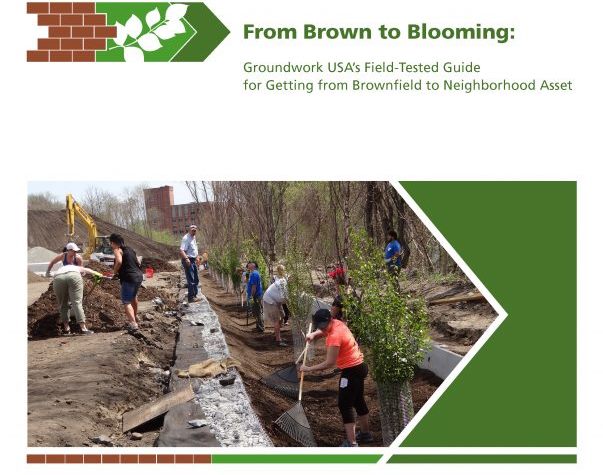Have you ever passed by a long-vacant or abandoned property and wondered, “What’s the deal here? Why isn’t our community making better use of this land?”
All over the country, neighborhood residents, nonprofit organizations, and local governments are working together to transform underutilized and contaminated properties into community assets such as affordable housing, community centers, maker spaces, playgrounds, parks, and more! But turning a site that is—or is suspected of being—contaminated (the EPA’s definition of a brownfield) into quality open space is no easy feat. You can’t do it overnight, and you certainly can’t do it alone.
That’s why Groundwork USA created From Brown to Blooming: Groundwork USA’s Field-Tested Guide for Getting from Brownfield to Neighborhood Asset. Designed for nonprofits or well-organized neighborhood associations, this new guide walks you through the many steps and considerations involved in taking a brownfield-to-open space project from inception to reality, including:
- determining if a site is contaminated;
- developing a strategy for working with the site owner to clean it up;
- engaging the community in meaningful and equitable site planning, design, and re-development;
- partnering with government agencies, technical experts, and local businesses; and
- getting it all funded.
Green gentrification—rents and property values rising in response to community improvements—is a real concern and challenge. But just as building a park isn’t going to fix every challenge that exists in a community, it’s likely not going to be the sole cause of rising rents.
Parks have tremendously positive physical and mental health impacts—but those impacts are useless to community residents if they’re priced out of their neighborhoods. One of the reasons we stress building strong coalitions of stakeholders (including residents, the business community, organizations doing parallel work, and local government) is that those relationships are powerful, not just for the creation of parks and other green spaces, but also when it comes time to solve other community issues.
Imagine harnessing the momentum and community-ownership that went into fixing up a brownfield site and directing it towards the creation of a land bank or a community land trust so that residents can build, from the ground up, the kind of place they want, and can afford, to live. There isn’t any big, 100% solution (or 100% cause) to gentrification and displacement. It’s going to take a lot of smaller 1% solutions that will only come into being through strong community relationships.

